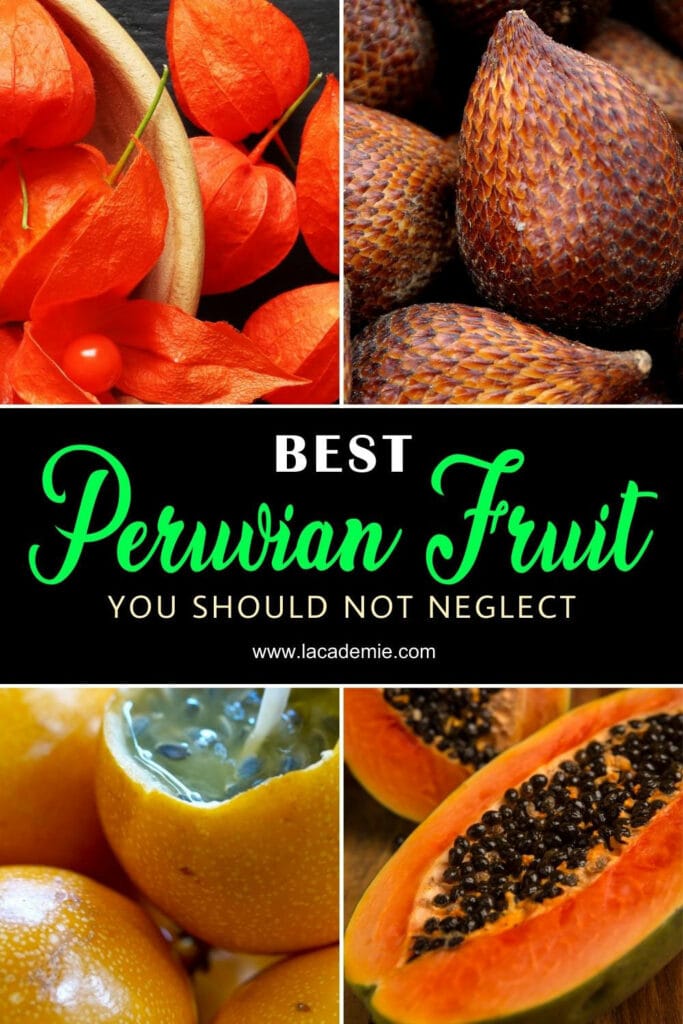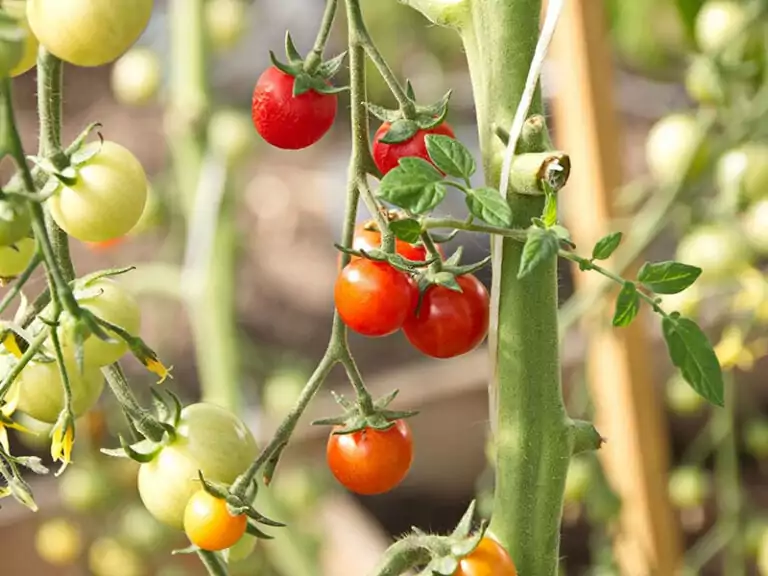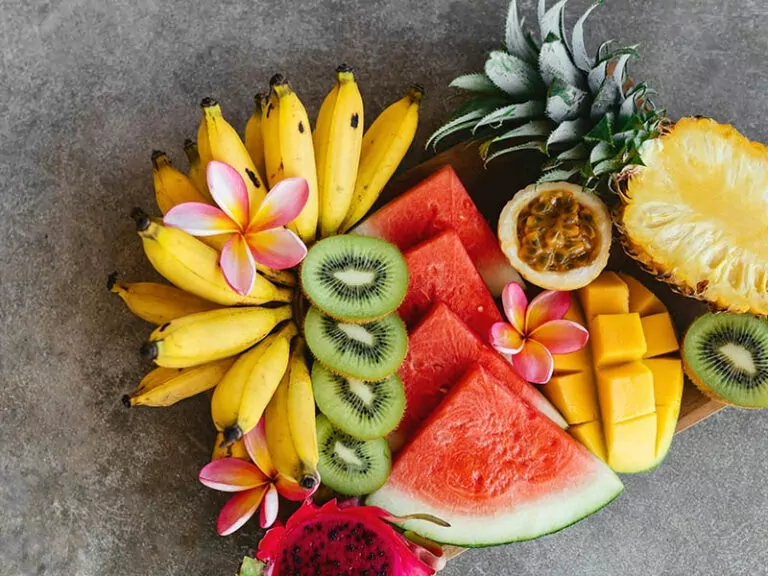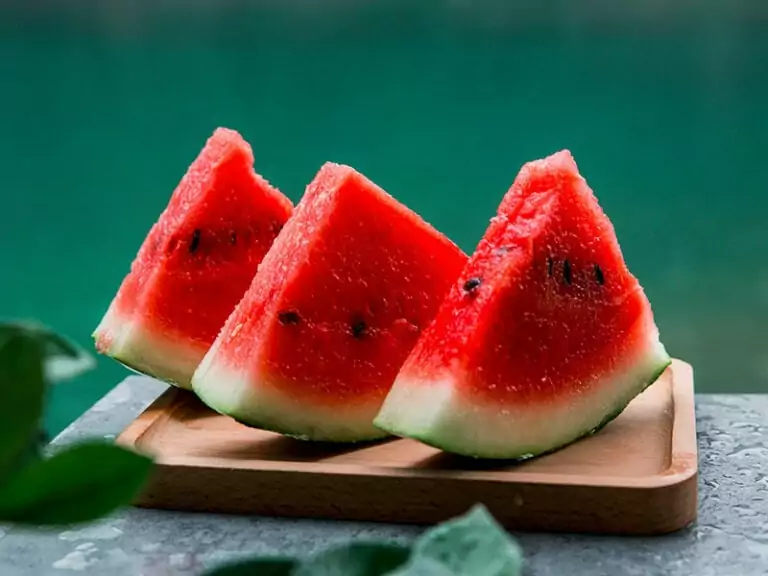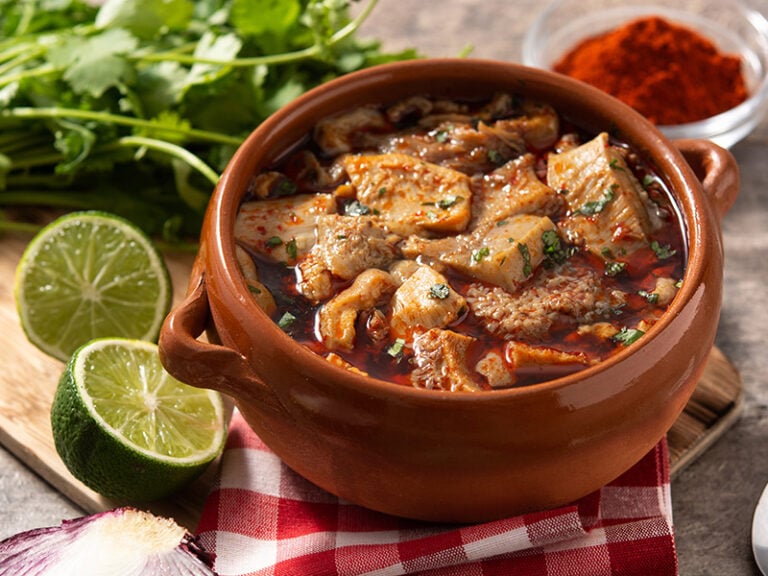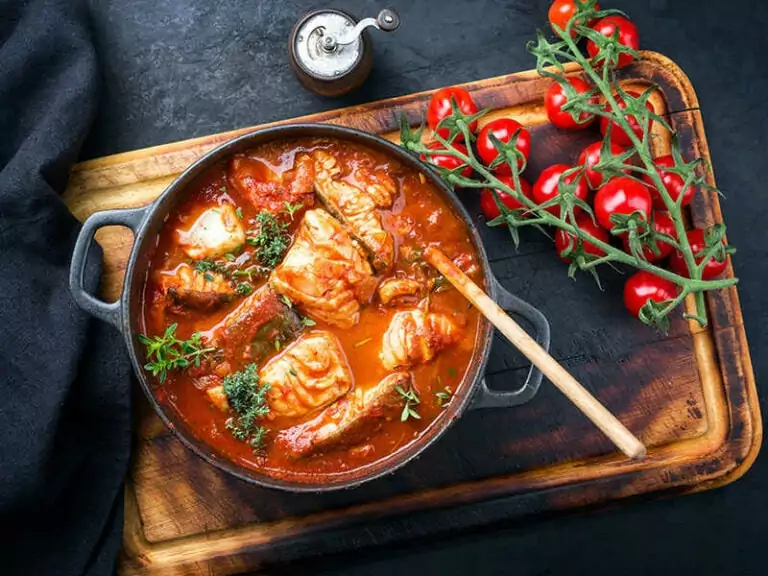You cannot resist the delicious and exotic flavor of Peruvian fruits. They play a crucial role in this South American country’s cuisine, tradition, and culture. Nowadays, they have become a curious topic of many people worldwide.
If you are one of them, the post is your savior. It will give you all the essential things about the popular Peruvian fruits. Moreover, you will know many ways to take advantage of the values of these fruits in cuisine with fantastic recipes.
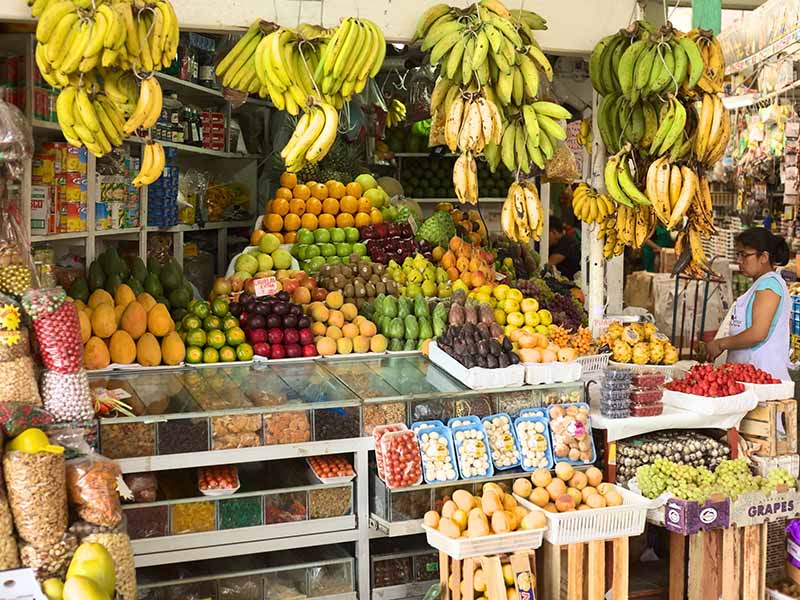
Delicious Peruvian Fruits Belonging To The Berry Category
To make it easy for your selection, I will divide the list of fruits into 2 sections. In this section, I will provide unique Peruvian fruits belonging to the berry category. Let’s check them out.
1. Goldenberries – Aguaymanto
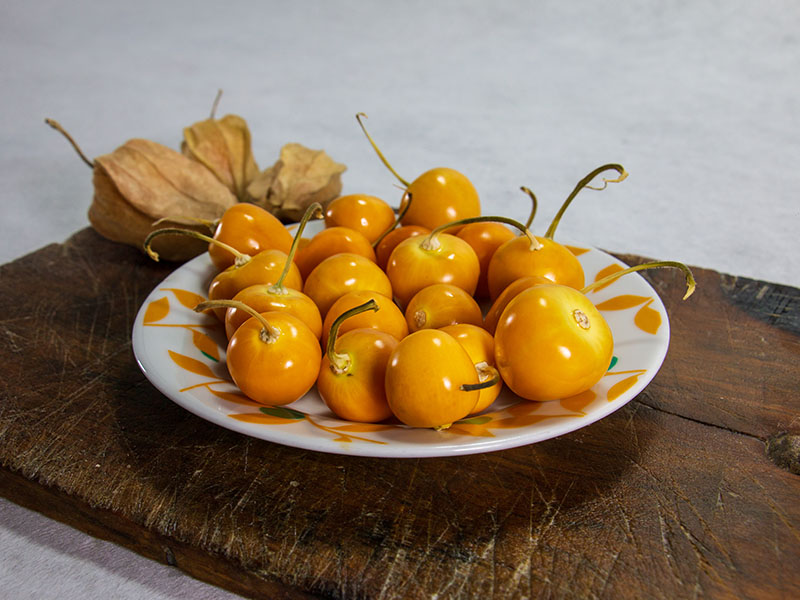
Aguaymanto of the Solanaceae family is the next fruit I want to introduce to you in this article. Besides Peru, it is a famous Ecuadorian and Colombian fruit because this fruit is native to these lands.
It has many other names, such as Uvilla, Uchuva, Poha, Cape Gooseberry, or Goldenberry. Aguaymanto has existed in South America since the Inca Empire. This fruit appeared in Europe (England) and Africa in the 18th and 19th centuries.
Its appearance has many similarities to a small tomatillo. In particular, this fruit is covered by a paper husk outside. You will be impressed with the round and smooth skin. The golden-yellow color of the rind will captivate you.
Its flesh has yellow or orange shades, and you will fall in love with the sweetness and slight acidity. The flavors are the same as the taste of grape or tomato. It is a favorite option to add to many desserts like Cusco.
Nutrients: High in calories, vitamin C, niacin thiamin, oleic acid, and vitamin K.
Season: This country’s peak season starts in March and ends in June.
How to eat: You can eat this fruit after washing it. Or, removing its rind before eating is also a good idea.
You can consume goldenberries easily by following these instructions.
2. Cotton Candy Berry – Capulin
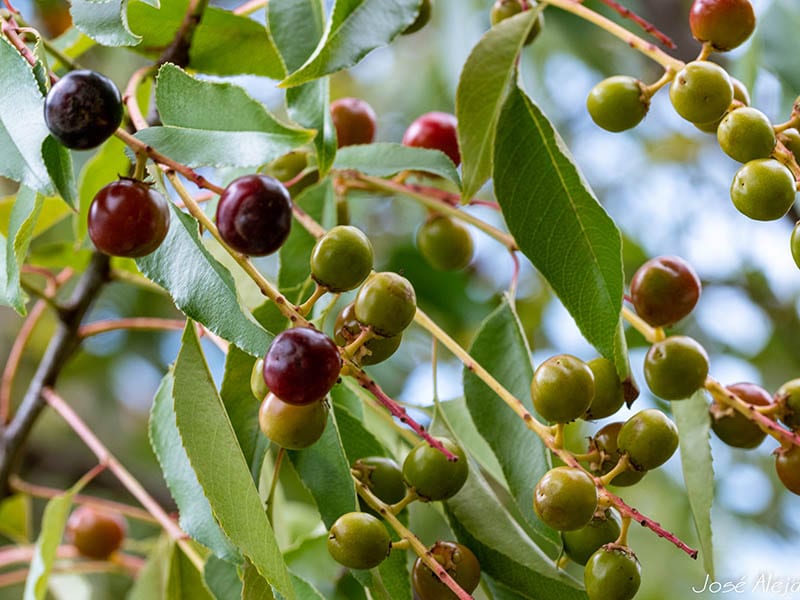
If you plan to travel to Peru, you should not neglect Capulin fruit. It is one of the most well-known cherries in Peru. This outstanding fruit is native to Central America, Mexico, and Bolivia. Gradually, it is cultivated in many tropical regions worldwide.
You can recognize Capulin easily, thanks to the prominent dark red or purple colors. Like other cherries, it has sweet and acidic flesh surrounding a seed. Capulin will thrive powerfully in the lowland regions.
There are many ways to take advantage of the incredible fruit in cuisine. Besides eating raw Capulin, people prepare jams, preserves, and other desserts from this fruit. It is a good idea when making syrup with Capulin.
Nutrients: A source of protein, fat, calcium, and phosphorus.
Season: It is often ripe from May to August in Peru.
How to eat: Please put it into your mouth and eat the flesh around the seed.
3. Camu Camu
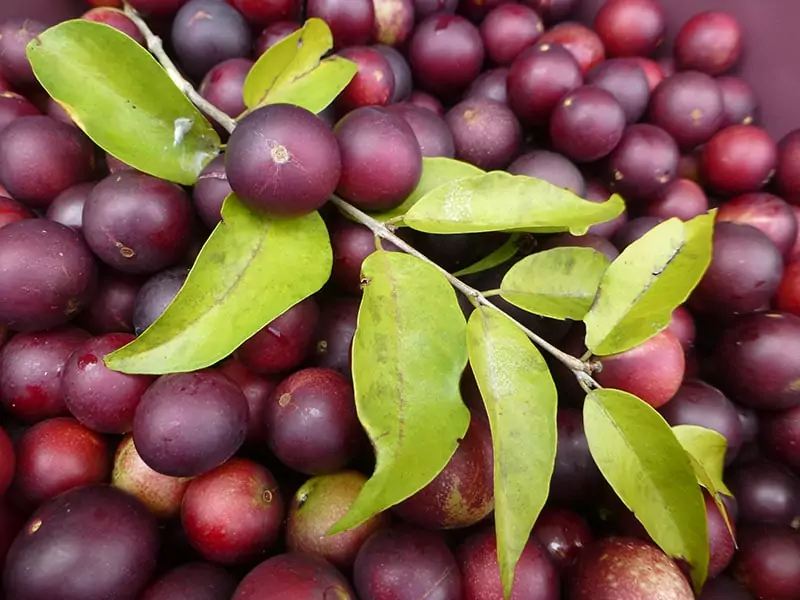
The Amazon rainforest is ideal for developing many plants, and Camu Camu is one of them. This fruit is famous in Brazil, Peru, and other South American countries. It is a source of vitamin C as it contains about 60 times more of this nutrient than oranges.
When mature, you cannot forget this famous fruit’s typical maroon or purple-black color. You will want to taste it immediately when looking at the perfect round shape and attractive appearance.
Because of the high in vitamin C, you can feel the tartness of this fruit. Furthermore, it will become more unique and fantastic with the sweetness. This fruit is a healthy fruit with non-GMO. You can eat it fresh or make juice, ice cream, and smoothies.
Nutrients: You will add vitamin C, flavonoids, antioxidants, and calcium after eating Camu Camu.
Season: It is common from April to July in Peru.
How to eat: Break the fruit with your fingers and eat its pulp. You must remove the seed of the fruit.
4. Beach Mulberries – Noni
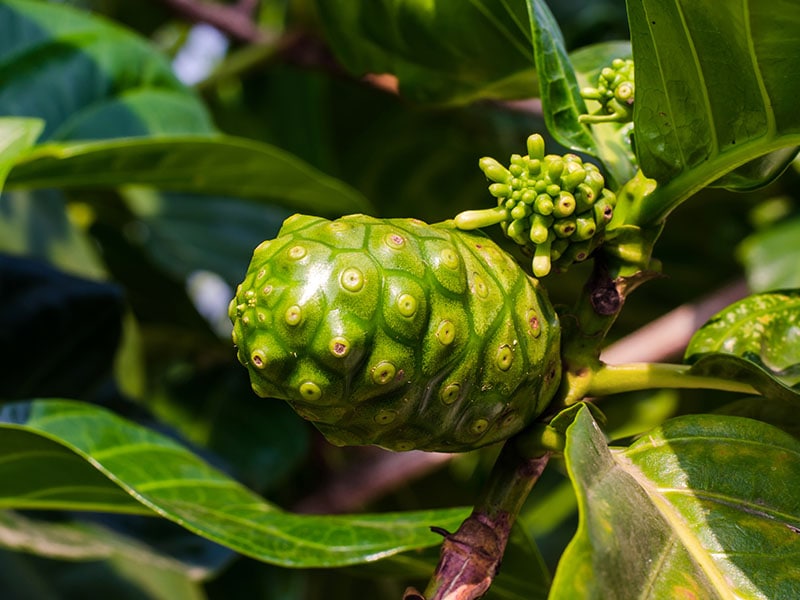
It is a pity not to try noni or beach mulberries in Peru on your trip. Although this fruit has its origin in Southeast Asia and Australasia, it is known commonly in Peru. Furthermore, the Polynesian sailors have brought this fruit to many regions around the Pacific.
It has about 100 other names in various regions. Great morinda, Indian mulberry, or cheese fruit are the famous English names for this unique fruit. However, many people do not like its smell because it is similar to the vomit odor. You can think of the scent of Parseman cheese.
However, it is considered traditional medicine or staple food in many regions. It looks fresh in green skin, and the yellow or white shades will appear when mature. Mainly, you can find numerous seeds inside.
Typically, you can create powders or Peruvian drinks from this excellent fruit. Moreover, Peruvians use this fruit to make lotions, soaps, or oil. You can feel its taste in curries or salads. It will become delicious when it is mixed with fruit juices and stews.
Nutrients: A source of carbs, fiber, calcium, sodium, niacin, potassium, vitamin C, and iron.
Season: You can buy this fruit easily from June to September.
How to eat: Remove the skin before consuming this fruit. Remember to get rid of its seeds.
Expand your knowledge with all information about Noni.
5. Elderberries – Sauco
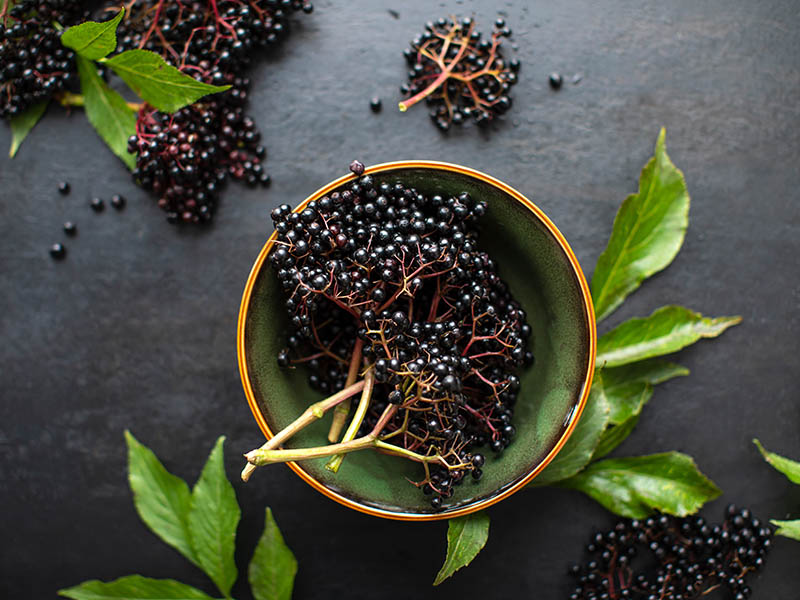
Sauco is also known as elderberries. It is an iconic member of the Caprifoliaceae family. You can come across this delicious fruit in many tropical regions in the North and South Hemispheres. But, it is cultivated widely in South America and Australasia in the South Hemisphere.
Because of the high anthocyanins content, this excellent fruit will have blue-purple color. In particular, when you dilute these berries with water, they will turn a reddish shade. They have a small size and attach to a big bunch.
This fruit is a delicious choice with moderate sweetness, and you can feel a bit of earthy and tart taste when trying this fruit. The balance of sweet and sour flavors will bring a pleasant feeling for you.
It is good to consume raw Sauco. You have to try the famous wine made from this incredible fruit.
Nutrients: High in carbs, protein, calories, vitamin C, B6, and iron.
Season: It is ripe from mid-August to mid-September.
How to eat: You can consume the fruit after rinsing it with water.
6. Mountain Papaya – Papayuela
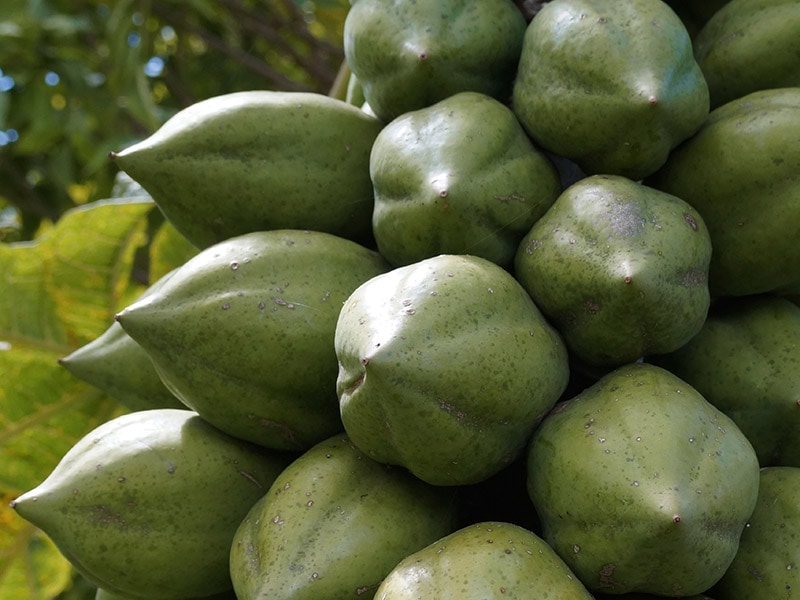
You will have a great trip when tasting the fantastic flavor of Papayuela or mountain papaya. This unique fruit is native to the Andes region, and you can find it in many tropical forests around the world.
Compared to other varieties of papaya, this version is smaller than the types you see in the European markets. Like other types of papaya, this fruit is green when unripe, and it will look delicious in deep yellow or orange hues.
This fruit’s smooth and creamy texture is compatible with creating yummy smoothies. Papaya will be flavorless when immature, and it will become sweeter when mature. It tastes like melons and mangoes.
In addition, a bit of the bitter flavor of papayuela will make you flutter right away. The papaya arequipena variety will be bitter and more acidic than familiar papayas. Your digestion will be better when eating this buttery fruit before each meal.
Nutrients: Rich in calories, fiber, vitamin C, calcium, magnesium, phosphorus, and potassium.
Season: This fruit is available all year-round in Peru.
How to eat: To enjoy this fruit, you should dice it into 2 sections and eat the flesh with a spoon. Especially, remove the seeds before eating.
7. Dragon Fruit – Pitahaya
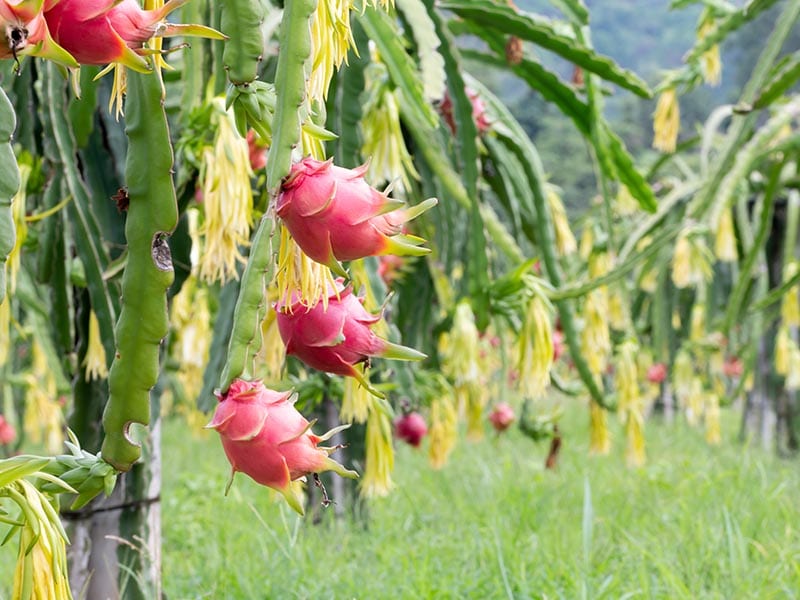
Have you ever tried dragon fruit or Pitahaya in Peru? If you can quickly feel the flavor of dragon Fruit in Thai, Indonesian, Filipino, and Vietnamese foods, this fruit is also represented in many excellent Peruvian foods. Let’s save this fruit on your list right now.
This fruit appeared first in Central and South America, and it is planted widely in Southeast Asia, the Caribbean, East Asia, and many other regions. Its name “dragon fruit” was called in the 1960s. If you are allergic to kiwi, you should not taste pitaya since it tastes like kiwi.
The origin of its name comes from the similarities between its appearance and a dragon’s head. The leathery skin with scaly spikes creates the unique exterior of this fantastic fruit. In addition, it is also called “Strawberry Pear” in many other regions.
Green is the color of unripe dragon fruit. And it turns yellow or red when ripe. White, red, and pink are the typical shades of the flesh, and the pink and red versions will be sweeter than the white ones. You can see dragon fruit with yellow skin and white flesh in Peru.
There are 3 different types of dragon fruit, including Pitaya Roja, Pitaya Amarilla, and Pitaya Blanca. There is no problem when consuming its tiny seeds. The mildly sweet taste of this fruit is suitable for making smoothies, juices, and desserts.
Nutrients: It includes calories, carbs, fiber, protein, vitamin C, calcium, and sodium.
Season: It is often mature between October and January.
How to eat: You can devour it by peeling and eating its flesh.
8. Guava – Guayaba
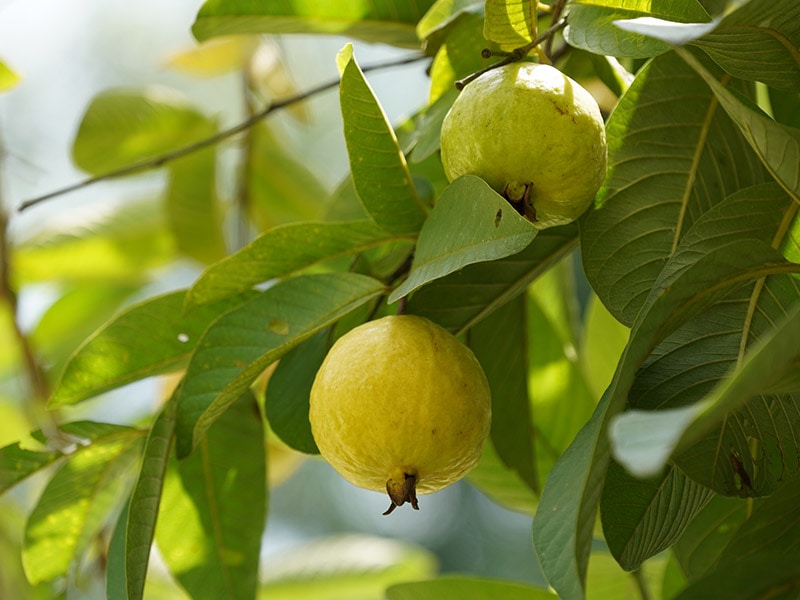
It is hard to resist the outstanding flavor of guayaba or yellow guava in Peru. The Caribbean, South America, and Central America are the original place of this delicious fruit. Moreover, it is grown commonly in many other tropical and subtropical areas.
You can catch many different types of guava in various sizes and colors. It can have the same size as apricot or a grapefruit. The green or yellow colors of guayaba will leave a profound impression on your mind.
The sourness and sweetness of its white, pink, or red flesh will make you flutter right away. Therefore, taste this yummy fruit if you have the chance. When eating the skin, you can feel the characteristic bitter flavor.
Guava is a fruit containing many edible and hard seeds, so you will have great experiences when consuming this fantastic fruit. Since this fruit has many names, some people might wonder if there’s a dissimilarity between guayaba, guava, and guanabana. Peru is the name of guava in India in the Hindi language.
You can create many delicious foods from guava. It is refreshing when enjoying fresh guava juice in the summer. The taste of guava jams and other desserts will not let you down. Alternatively, it is often eaten raw with chili salt or shrimp paste.
Nutrients: High in calories, sodium, carbs, vitamin C, and protein.
Season: November to March is a suitable time for picking guayaba in Peru.
How to eat: Let’s peel the guava and cut guava into small pieces to eat. Moreover, you can consume its skin if you want.
9. Banana Passionfruit – Tumbo
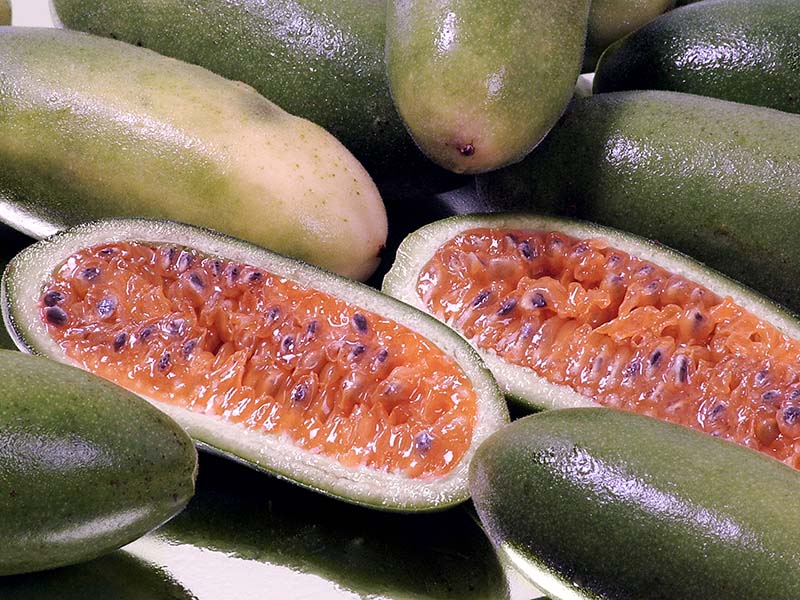
Tumbo is a local fruit of Peru and many other South American nations. It originates from the Andean regions, including Peru, Colombia, Bolivia, and Venezuela. The seeds of this fruit were brought from Colombia and Ecuador to the US in 1920.
Today, you can buy this fruit in the Mediterranean, Australia, India, and Africa. People often call it “banana passionfruit” in English, and it got this name in the 1850s in New Zealand. Its shape resembles banana, and the flesh is similar to passionfruit.
This fruit has an oblong shape and lengths of about 12 centimeters. This fruit’s thick and leathery rind will have light yellow or orange-yellow colors when ripe. The succulent flesh and countless edible seeds inside will make you flutter.
In particular, the enchanting fragrance of tumbo will make you fall in love with it. The sweetness and mild acidity of its pulp and seeds are suitable for making excellent juices, smoothies, cocktails, or drinks. However, you will feel a bit of bitter taste from the seeds.
Peruvians do not like eating raw tumbo because of the intense flavor. In particular, the acidity of this fruit is more robust than other maracuya.
Nutrients: It includes vitamin A, C, potassium, phosphorus, calcium, iron, and niacin.
Season: It is ripe from June to September in this gorgeous country.
How to eat: Dice the fruit into 2 halves and scoop the flesh and seeds with a spoon.
10. Amazon Tomato – Cocona
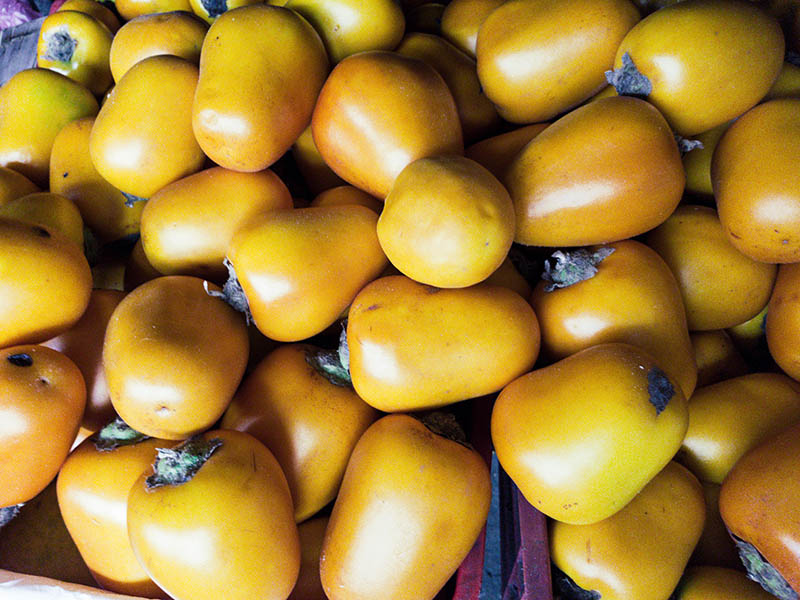
When talking about the famous South American fruits, I have to mention Cocona. This exotic fruit is also known widely as the Amazon tomatoes. It has other names in many countries, such as Cubiyu in Brazil and Topiro in Venezuela.
The Andean area is the homeland of this excellent fruit. In Peru, you cannot find it everywhere across this country. It is easy to buy this fruit in Cuzco, but you can find it difficult to seed Cocona in Lima. This berry fruit is often orange, red, or yellow.
You will immerse yourself in the creamy and juicy flesh. This fruit is one of the people’s favorite foods in the Amazon Basin. It has the same aroma and flavor as the tomato. The distinctive tartness is compatible to use in many foods.
Peruvians often add this exceptional fruit to sweet or savory recipes. Furthermore, the taste of juice, sauces, and other desserts will be better with the appearance of Cocona. Primarily, Peruvians use it as an ingredient for empanadas.
Medium-yellow, pear-shaped, round yellow, and purple-red coconas are the 4 main types of this delicious fruit in Peru.
Nutrients: High in iron, vitamin B5, calcium, thiamin, fiber, and phosphorus.
Season: It is available from fall to winter in Peru.
How to eat: You can consume the fruit after removing its rind.
11. Sweet Passion Fruit – Granadilla
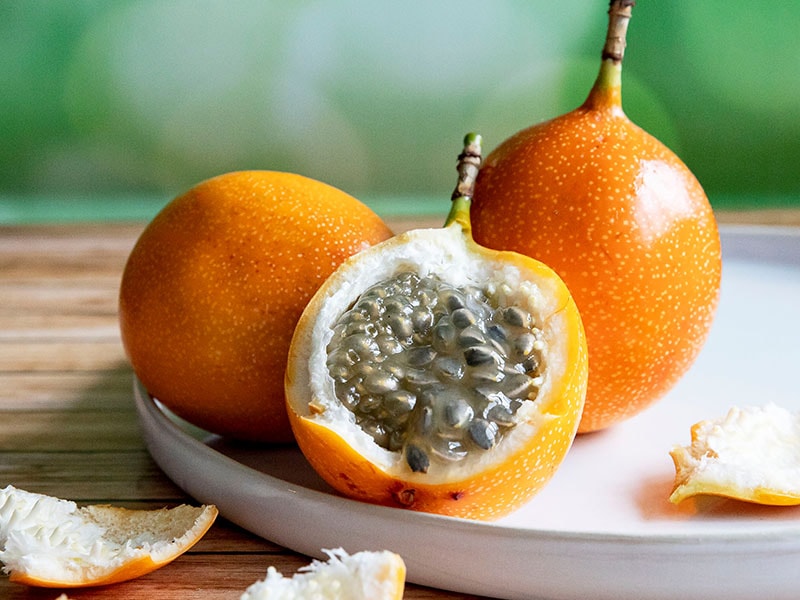
Do you love incredible drinks made from passionfruit? Granadilla or sweet passionfruit is an ideal choice for your hot summer days. This popular fruit originates in the Andes Mountains of Peru, Costa Rica, Colombia, Bolivia, and Ecuador.
Besides, it is one of the favorite Argentina fruits. If you want to find it outside South America, you can come to Mexico, Africa, Australia, and New Guinea. In terms of shade, this fruit has prominent yellow or orange colors. A few light spots will make it unique.
Numerous black seeds are covered by succulent and gelatinous pulp inside the glossy skin. This is the most valuable part of this fruit because it contains vitamin C, A, calcium, iron, and phosphorus.
Peru is one of the countries that produce many Granadillas globally. The enchanting sweetness of this fruit will make you fall in love. In addition, you will feel a hint of its distinctive tartness. This fruit is used commonly in making juices, drinks, and salads.
Nutrients: Rich in vitamin C, phosphorus, iron, calcium, and potassium.
Season: It is common in Peru all year round.
How to eat: Create a hole on the surface’s skin with your fingers. Break the second rind and suck the seed of this fruit to consume the flesh.
12. Prickly Pear – Tuna
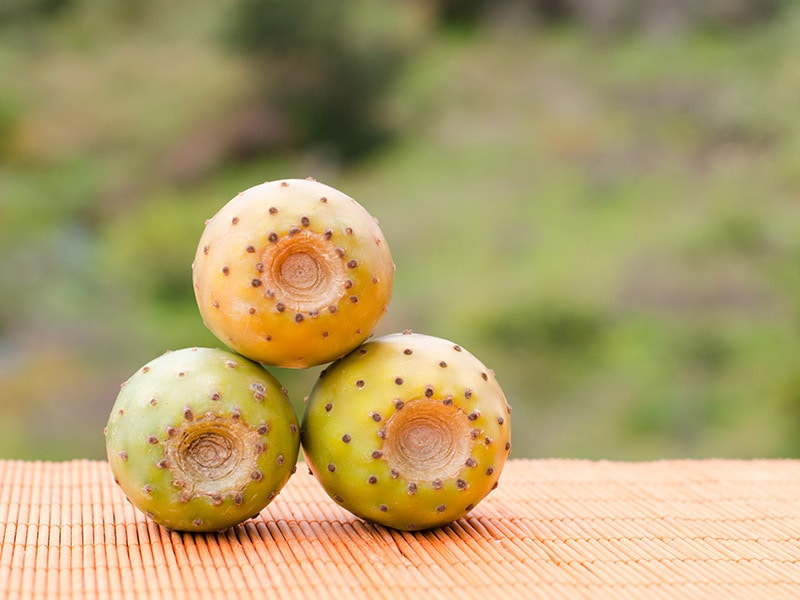
Do not confuse it with the famous fish because this is a well-known Peruvian fruit. In English-speaking countries, people often call it “prickly pear”. This fruit has its origins in the Americas, and it gradually spreads to Europe and Asia.
Thanks to its red or yellow colors, you can realize this fruit quickly. You should be especially careful when preparing this fruit because it has many sharp spines on the surface. You can imagine a small pear when you check out its appearance.
The sweetness of the pink or red flesh of Tuna fruit will make you want to taste it again. Its flavor is similar to the taste of berries. There is no problem when consuming its seeds, but you should remove the skin.
People usually eat succulent fruit after each meal to refresh their taste buds. Moreover, you should not ignore the jellies, juices, smoothies, and other desserts made from this fantastic fruit.
Nutrients: It has vitamin C, K, E, potassium, calcium, phosphorus, and beta-carotene.
Season: The season lasts from November to March in Peru.
How to eat: Use a knife to cut the ends off and peel the fruit’s rind. Consume the succulent flesh of this fruit.
Learn the simple way to collect prickly pears properly.
Diversify Your Menu With Other Peruvian Fruits
Besides the above choices, you can refer to these other Peruvian fruits in this part to diversify your desserts menu. Trust me! Their flavor will not let you down.
13. Eggfruit – Lucuma
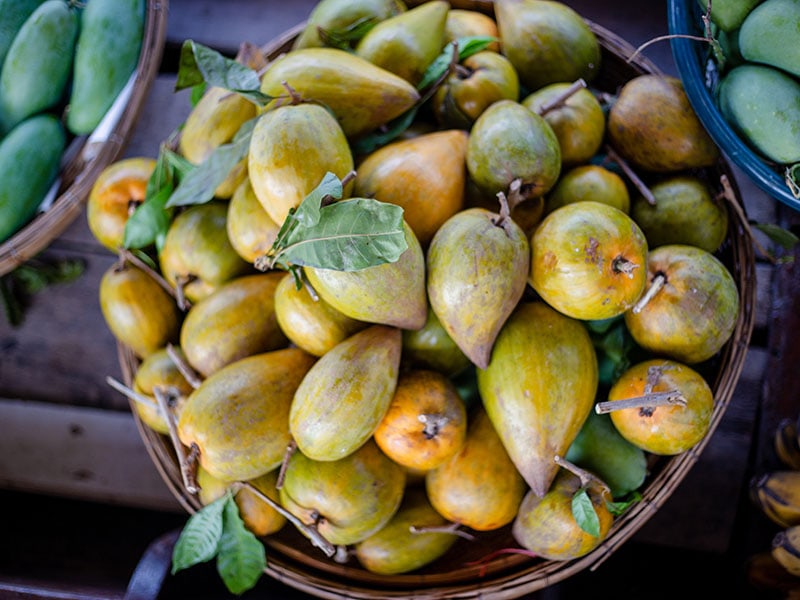
Lucuma is a national fruit of Peru, and it belongs to the Sapotaceae family. This distinctive fruit originates in the Andean valleys of Chile, Peru, Bolivia, and Ecuador. You can find lucuma images on ceramics at burial sites of local people in coastal regions in Peru.
Typically, lucuma appears round and an eye-catching bright yellow when ripe. You can find 1 to 5 glossy and brown seeds in the middle of the fruit. People often call it “eggfruit” in English.
However, besides the similarity in yellow color with egg, its flavor and texture are different. The sweetness is the characteristic taste of this fruit, and you can imagine the flavor of sweet potato or the mixture of banana and chocolate when tasting it.
It has a unique and charming fragrance. In Peru, you can come across this fruit in milkshakes, ice cream, or juice. In addition, people often consume fresh lucuma as a dessert after each meal.
Nutrients: Rich in calories, carbs, fiber, protein, vitamin C, calcium, potassium, sodium, and phosphorus.
Season: It is usually ripe from October to March in Peru.
How to eat: To eat this fruit, you just need to slit this fruit into 2 parts, remove the seed, and use a spoon to eat its flesh.
Let’s explore all things about the excellent lucuma.
14. Snake Fruit – Aguaje
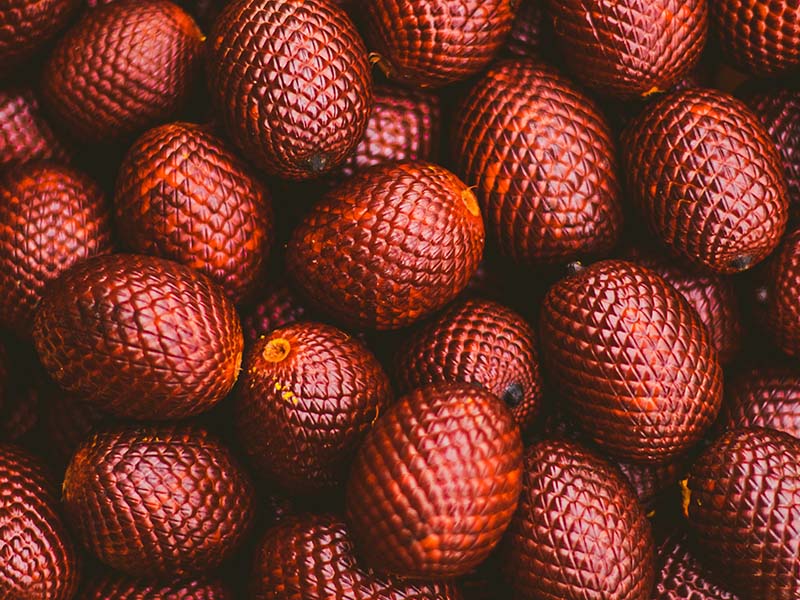
You can try many types of fruits in Peru, but do not ignore aguaje. It is a palm fruit and widespread in the swamps and wet regions of South America. People often call it the “Tree of Life”. The oil of aguaje is good for your skin with many nutrients.
This fruit looks dominant in the purple-red skin. Its appearance resembles a pineapple, and you can think of the snakeskin when observing this unique fruit. A layer of yellow flesh will surround the hard seed in the center. Its flavor is similar to the taste of carrots.
This fruit is a favorite food of many bird varieties in the natural environment. Meanwhile, people will use it for making juice, jam, ice cream, or wine. Peru produces over 50 tonnes of aguaje in a day.
Nutrients: It provides fiber, vitamin A, C, E, riboflavin, niacin, thiamine, and carotene.
Season: Its season lasts from December to June in Peru.
How to eat: Before eating the flesh, you need to peel the skin. Mainly, you should get rid of its seed.
15. Custard Apple – Cherimoya
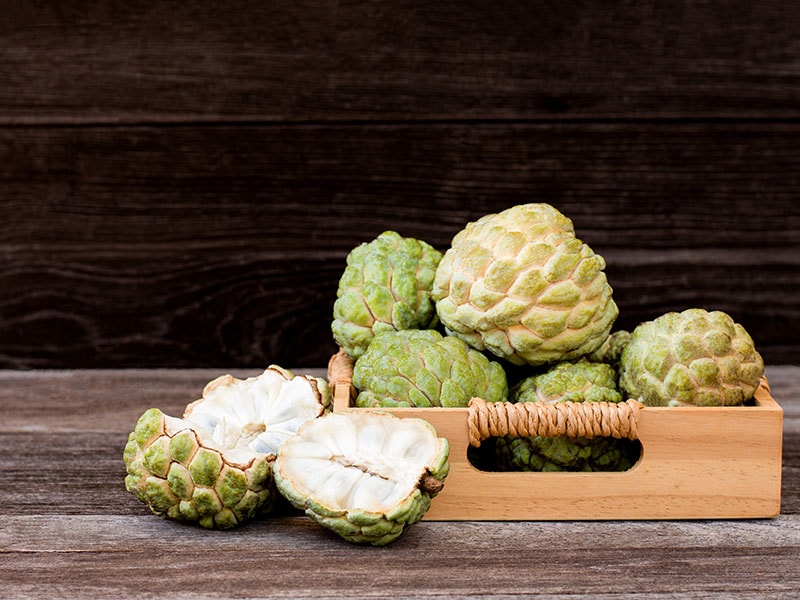
When referring to the delicious Peruvian desserts, it is a shortcoming not to talk about custard apple or Cherimoya. Peru and Ecuador are the homelands of this famous fruit. Nowadays, its cultivation commonly occurs in the Andes, tropical, and subtropical areas.
The name “custard apple” comes from the creamy texture of this fruit. And its name “Cherimoya” has its origin from the word “Chirimuya”, which means “Cold Seeds” in Quechua. It is also known as Chirimoya in many other South American countries.
It looks appealing in the heart shape and green hue when unripe. The skin’s surface is unique, with many overlapping scales or knobby warts. It will have a brown color and fissured surface when mature. You will love the creamy texture of white flesh.
There are countless inedible black seeds inside this fruit. When tasting it, the sweetness and sourness will conquer you immediately. Its flavor is similar to the combination of pineapple, banana, strawberries, and kiwi.
Peruvians often eat raw Cherimoya, but it also appears in juices, smoothies, yogurt, ice cream, and other delicious Peruvian recipes. This fruit contains a lot of antioxidants and vitamins that are good for inflammation and eye health.
Nutrients: It includes calories, carbs, fiber, vitamin C, calcium, phosphorus, and potassium.
Season: April to August is the peak season of this fruit in Peru.
How to eat: The fastest way to consume this fruit is to remove the skin with your hand and eat the flesh. Remember to remove the seeds while consuming.
16. Mango
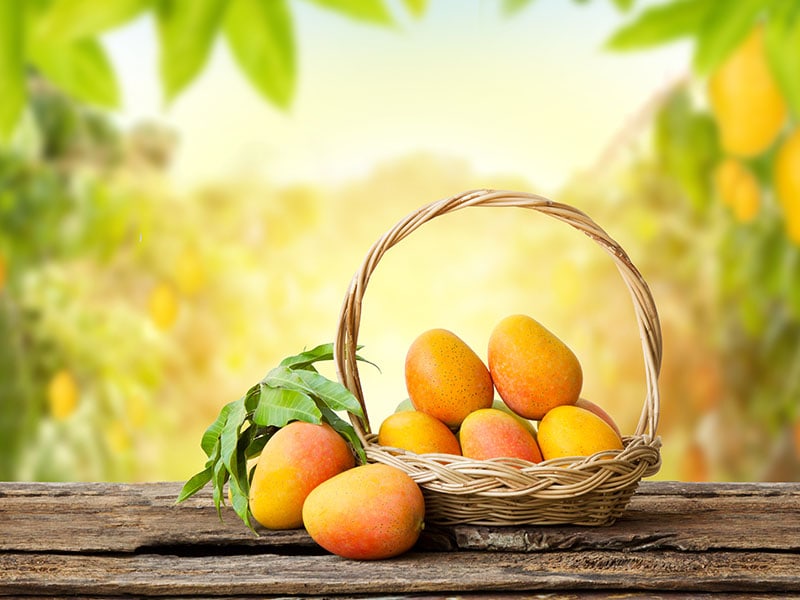
If you are a fan of mango, you should taste this fruit in Peru. It is a favorite choice of natives and tourists when coming to this country. Mango is derived in Northwestern Myanmar, Northeastern India, and Bangladesh, and you can find it in South East Asia and America.
This excellent fruit has been cultivated since ancient times. Indian mango and Southeast Asian mango are the 2 main types of fruit. Moreover, you can see hundreds of cultivars of this fruit worldwide. The reddish skin and flesh version will be more orange than yellow.
Due to the difference in types, mangoes will have various shapes, sizes, and colors. Most immature mangoes have a green color, and they will turn yellow, yellow-red, yellow-orange, pink, or purple when ripe, depending on the type.
You can find it in oval, round, or kidney shapes. Significantly, mango’s waxy and smooth skin will attract you right away. The soft and delicious flesh will cover a flat pit in the center. The seed contains a fibrous or hairy layer outside.
The sweetness and a bit of sourness will be suitable to add to many delicious Peruvian recipes, such as ice cream, juices, smoothies, or salads. You can eat raw mangoes with chili salt.
Nutrients: High in carbs, protein, folate, and vitamin C.
Season: It is available from December to March in Peru.
How to eat: The standard way to eat a mango is to peel the fruit and eat the flesh around the pit. Moreover, you can cut around the seed and eat the flesh from the skin.
Verify the authentic flavor of delicious Peruvian mangoes.
17. Soursop – Guanabana
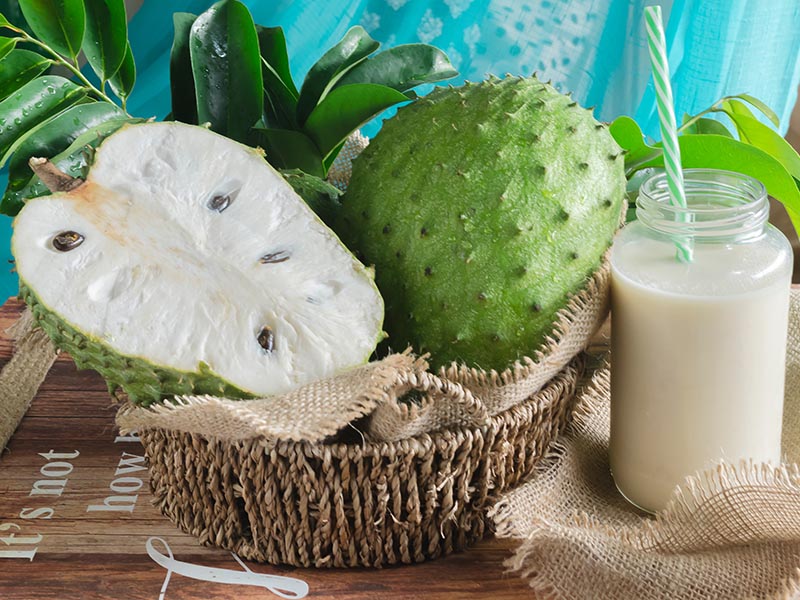
This excellent fruit is also known as soursop in English. Guanabana belongs to the Annonaceae family with Cherimoya. This superb fruit is planted first in the Caribbean, Central America, and India. Nowadays, it is common in many tropical regions.
Soursop has a complex flavor with sweetness and sourness. Many people said that its flavor resembles pineapple. Also, you can remember the mixture of Apple, Strawberries, and citrus fruits when eating this fruit.
In particular, the creamy texture of the soursop is similar to a banana. Besides the incredible taste, it is a good choice for cancer treatment. This fruit has a rustic appearance with deep green and prickly skin.
Guanabana looks outstanding in its oval shape. And the firm texture of the skin is the dominant characteristic of this unique fruit. You can consume the white pulp as a delicious and fresh fruit dessert or make ice cream, sorbets, smoothies, candies, and drinks.
Nutrients: A source of calories, carbs, vitamin C, calcium, magnesium, phosphorus, and potassium.
Season: This fruit is available all year round in Peru.
How to eat: Get the flesh with a spoon after dividing the fruit into 2 sections. Remove the seeds while eating.
18. Ice Cream Beans – Pacay
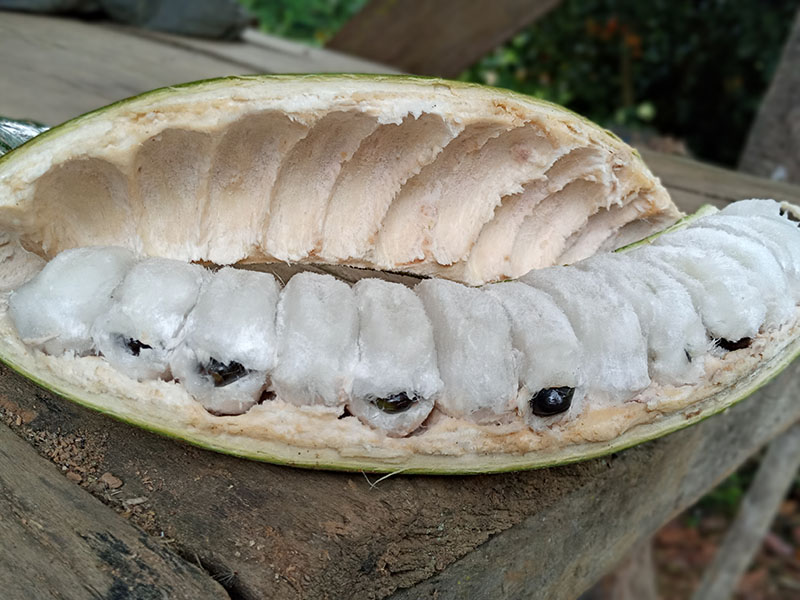
Pacay is a member of the Fabaceae family. This fruit is expected in the Andean regions of South America. You can call it “Ice-Cream Beans” in English and Guaba in Costa Rica. This fruit is good for the stomach and digestion. It appeared in Cusco in the Incan Empire.
The edible white pulp of the fruit will be contained in the pods. There are 2 controversies about this fruit. A view said it is a legume, but another thought said it is a type of fruit. The sweet taste and smooth texture of pacay will conquer you right away.
In particular, you will get a hint of vanilla ice cream or cotton candy from the flavor of pacay. This fruit often appears near the river banks. Primarily, you can eat these seeds as a vegetable or roast them to consume as a snack.
Nutrients: High in calcium, iron, phosphorus, vitamin C, and ascorbic acid.
Season: Its season extends from August to January in Peru.
How to eat: Break the fruit with your hand and eat the pulp around the seed.
19. Orange
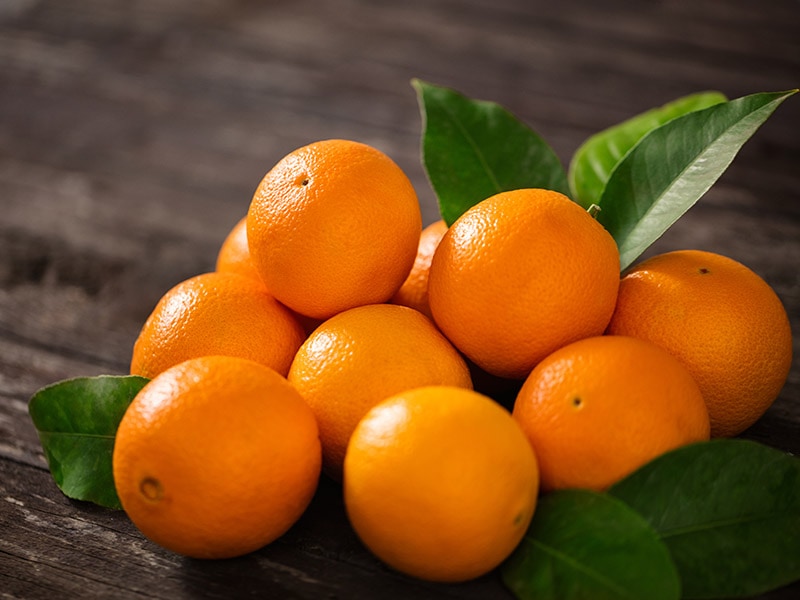
Orange is a worldwide fruit, so you can come across this fruit quickly in Peru. This citrus fruit originates in Southern China, Myanmar, and Northeast India. Gradually, this fruit spreads to Southeast Asia, South America, and other tropical regions.
Orange is a hybrid product between pomelo and mandarin. Orange is covered by a fragrance and eye-catching peel like other citrus fruits. You can see its skin in orange, green, or yellow, depending on different types of oranges around the world.
This fruit contains about 10 to 12 segments inside. The juiciness of them will make you fall in love right away. A thin edible film protects each segment. The distinctive sweet taste of orange will bring fantastic juices for you.
Nutrients: High in calories, calcium, vitamin C, magnesium, and potassium.
Season: Its season runs from April to August in Peru.
How to eat: Peel the rind of the orange and separate the segments to eat directly. Also, you can cut it into slices vertically and eat the flesh from the skin. It is fantastic to squeeze the juice from this fruit for dessert.
20. Cacao
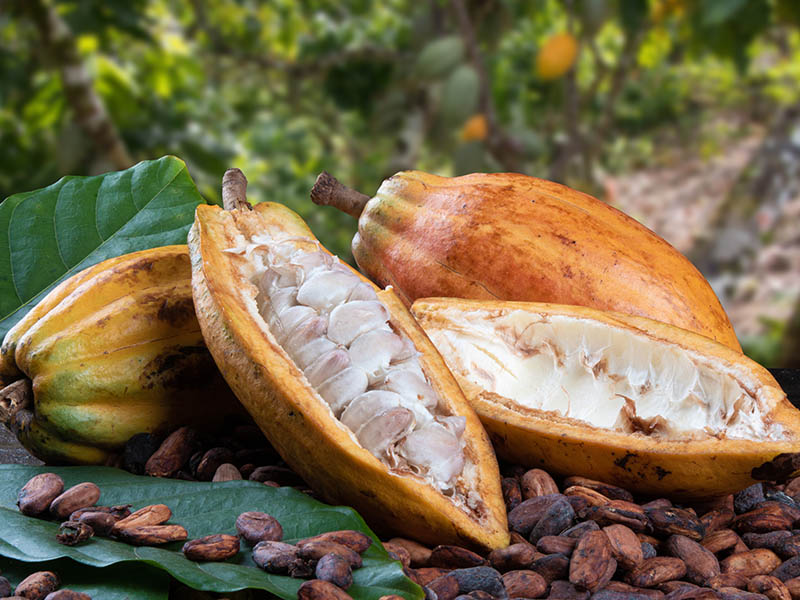
Cacao is a popular fruit in Peru. This country is one of the leading producers of cacao around the world. Cacao is one of the main exported products of this South American country. Therefore, it is a pity not to try cacao when traveling here.
Today, finding cacao in many regions worldwide is not complicated, such as Mexico, Central America, and Africa. Cacao fruit or cacao pods will have yellow or orange hues. In particular, the oval shape is the characteristic feature of this fruit.
One fruit includes about 20 to 60 seeds covered by a white pulp. These seeds are the central valuable part of this fantastic fruit. Although cacao is the crucial element in making chocolate, its flavor is different. The cacao beans are bitter, so do not taste them.
Similar to other Peruvian fruits, the white flesh will bring sweetness and tartness. Peruvians love to make juice, smoothies, cream, and jellies from cacao pulp. They will roast the seeds to create incredible chocolate.
Nutrients: It contains vitamin A, B, E, C, calcium, copper, manganese, potassium, and iron.
Season: It is available from April to August in Peru.
How to eat: Slice it and get its seeds using a spoon. You can suck the juicy pulp outside the seed to enjoy the sweetness.
Check the methods to make chocolate from cacao right away.
21. Sweet Cucumber – Pepino Dulce
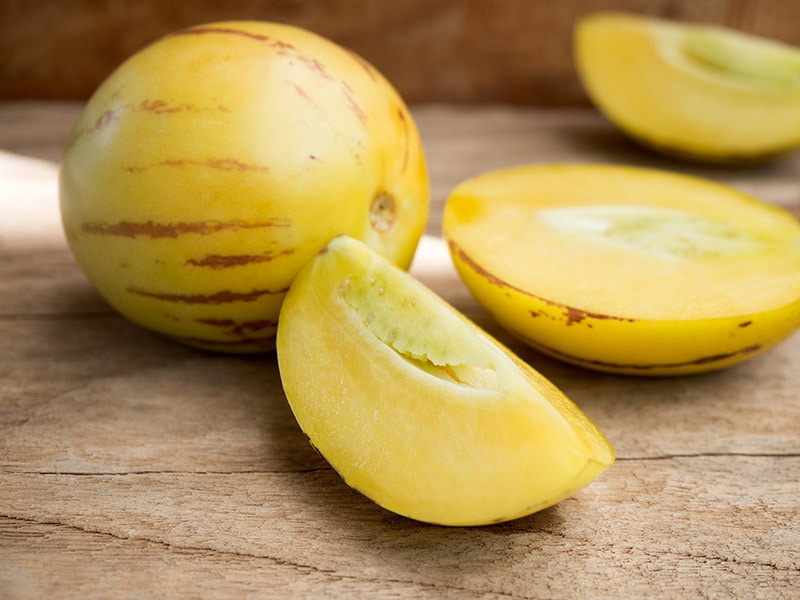
I am sure that you will be addicted to the outstanding taste of Pepino Dulce. This yummy fruit originates in South America. This fruit is also known as “Sweet Cucumber” in some English-speaking nations”. In addition, people often call it “Melon Pear” or “Pepino Melon”.
It has these names because of the similarities in color. However, the fantastic flavor and texture of Pepino Dulce will remind you of Honeydew and Cucumber. This fruit has a close relation to eggplants or tomatoes.
Besides the South American countries, you can consume this fruit in Turkey, New Zealand, or Mauritius because it is a commercial product. This fruit had appeared in the US before 1889, and it was introduced to Japan and many Asian countries.
The mild flavor of Pepino Dulce is a perfect option to mix with other fruits in the fruit bowl. Moreover, you can consume the fresh version or add it to many dessert recipes.
Nutrients: A source of carbs, protein, fat, and vitamin C.
Season: This fruit is popular in Peru from November to April.
How to eat: You can peel the fruit’s skin and eat its flesh. Moreover, it is acceptable to slice it and get the flesh with a spoon.
Do You Love These Peruvian Fruits?
Which is the favorite Peruvian fruit on this list? If you want to check the authentic feeling, please take a trip to this nation to try all of these unique fruits. It is time to immerse yourself in the paradise of Peruvian fruits.
To express the pleasant feeling after reading this post, you should share and like this valuable article with many people around you. Please exchange your other information about this topic by leaving the comments below. Thanks for reading!
